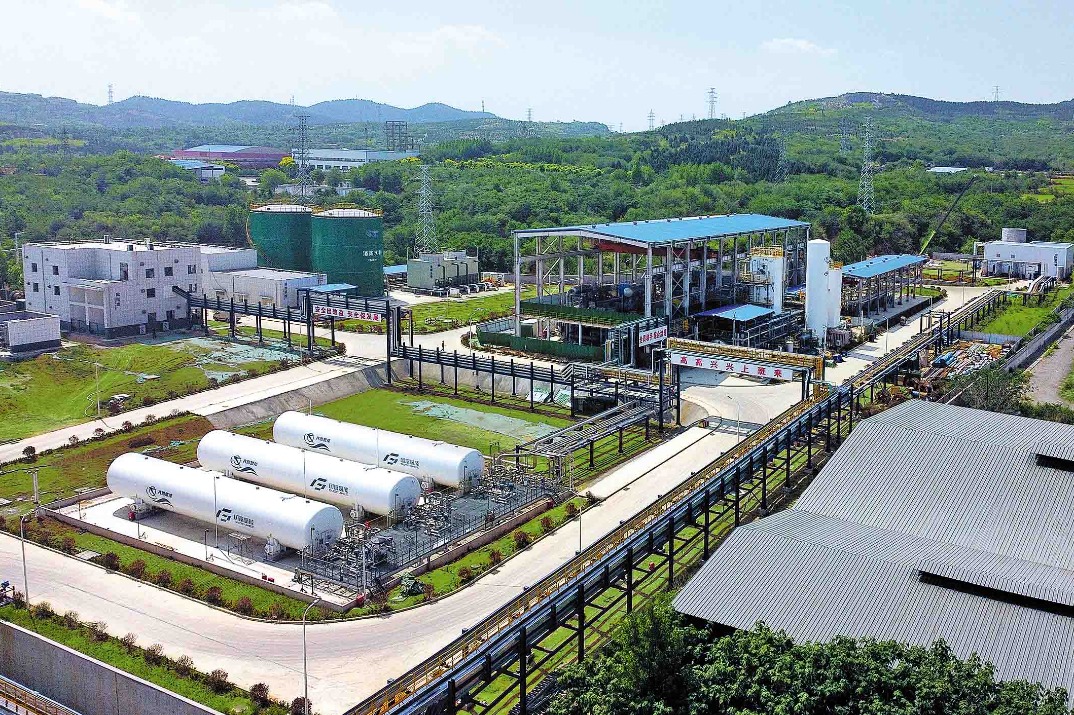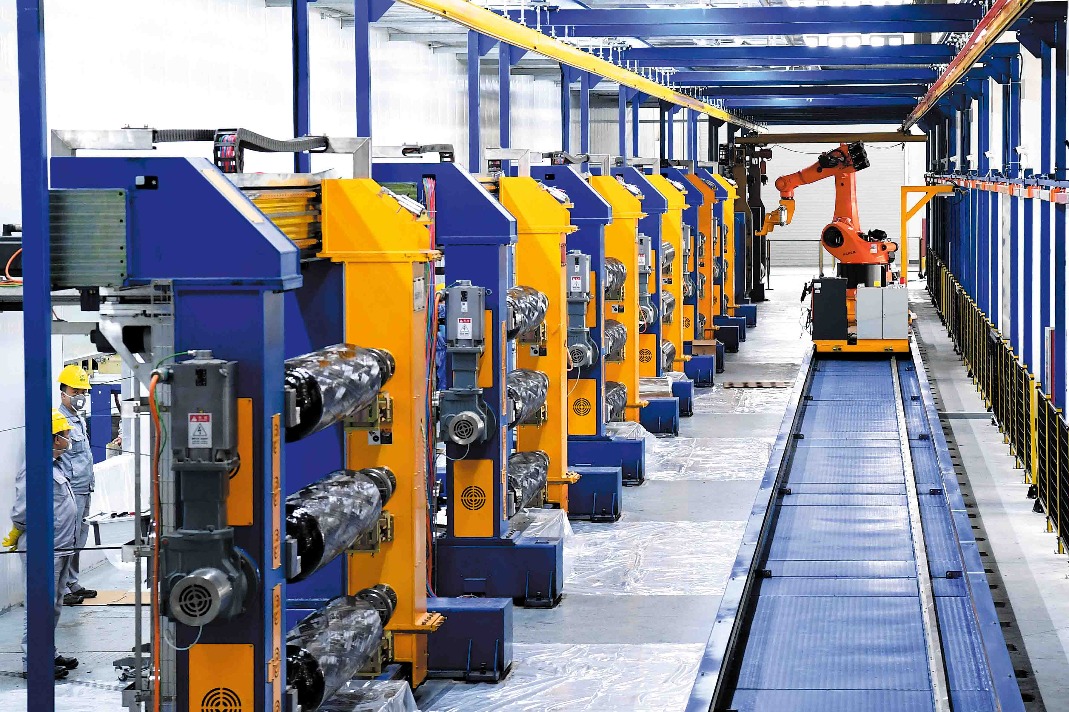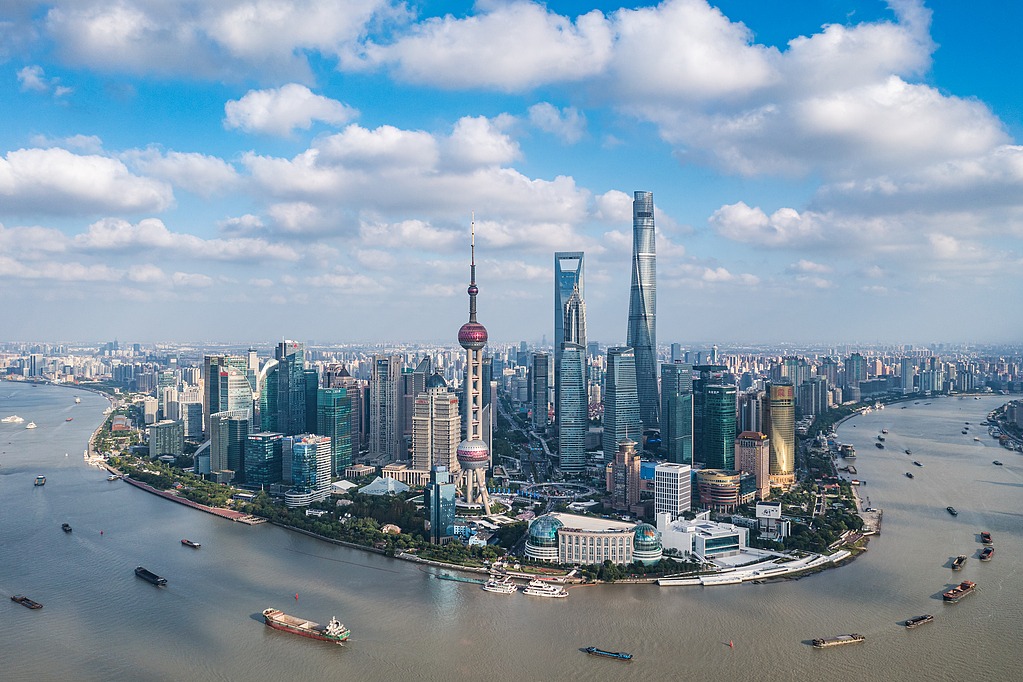3 issues that'll shore up future of economies


The ongoing COVID-19 pandemic has brought about changes to the macroeconomic system of each country and also that of the globe: Inflationary pressure is showing signs of abating while deflation is being seen in parts of the world where money supplies are tightening; low interest rates, even negative rates in some places, are beginning to spread; volatility of economic growth has decreased; deficits and debt have become long-term issues; government bond markets have become a major focus within fiscal and monetary policies; amid calls for de-globalization, countries are slowly weakening transnational economic ties … All these changes are posing challenges to traditional macroeconomic theories and the expert analyses written about global economic and trade issues.
This article will mainly discuss issues of global debt, China's debt and employment.
Global debt
Since the 2000s, huge amounts of debt have accumulated in advanced economies such as the United States. Some of the reasons for this are domestic, such as long-term economic downturns and governments of these countries needing to continuously stimulate the economy through fiscal deficits leading to ever-higher debts. External factors include a decline in the competitiveness of their own economies, resulting in frequent and ballooning current account deficits. Being in control of the issuance of global reserve currencies, these countries can use their own currencies to not only fund trade deficits, but also their debts. Such a mechanism has closely linked global debt and international finance with domestic debt, financial operations and even macroeconomic policies of these countries. Based on this mechanism, global debt this century has not seen ups and downs, but has instead been peaking all the time and finally resulted in a flood of global liquidity.
By the end of the second quarter, total global debt reached $296 trillion, equivalent to 355 percent of global GDP. If calculated on the basis of a 7.5-billion world population, per capita debt is as high as $39,400.Such a high debt intensity fully shows that the efficiency of financial services to the real economy is declining globally. How to deal with such huge debt is a big problem to be tackled in the post-COVID era.
In October, the Fed's interest rate meeting pointed out that it will reduce debt purchases monthly, starting in November, and will stop the practice completely in the first half of 2022. If balance sheet reduction-that is, the restoration of monetary policy to a state of normalcy-is a process, stopping debt purchases is only the first step. First, it will stop increasing its scale. As for reducing total debt volume and accompanying interest rate adjustments, no arrangements have been made yet. However, since volume (liquidity) and price (interest rates) are linked under the market economy, it can be predicted that since debt reduction actions have taken place, interest rates will change sooner or later. In this regard, China must have countermeasures in place.
If the Fed expands its balance sheet, the overall impact will not be very negative for the rest of the world, because the implementation of the Fed's expansionary policy will increase the outflow of capital to other countries, which in turn will lead to lower interest rates, currency appreciation and firmed-up asset prices. Although it may be accompanied by imported inflation, because the availability and cost of funds will be improved, the overall impact will be beneficial, especially for the vast number of developing countries. On the contrary, if the Fed shrinks its balance sheet, a large amount of funds will flow back to the US, leading to falling asset prices in other countries. The overall result will increase development costs and slow the development pace of these countries. The issues above, in my opinion, are what the country needs to prepare for currently.
China's debt
In the context of global debt overflow, China's debt has been expanding as well, with leverage rising in tandem. Thanks to the structural reform moves in the nation in the years prior to the COVID-19 outbreak, the rising tide of high leverage has been curbed. The year 2020 pushed fiscal deficit and loans with the outbreak of COVID-19, which led to rises in debt and leverage. However, the situation has reversed as the gearing ratio of the nonfinancial sector has been declining, and the decline has been significant in the first three quarters.
The leverage issue, in my opinion, should be a neutral word, rather than something we always consider to be harmful to the sound development of the economy. This is especially true when the decline in leverage levels in nonfinancial sectors in the first three quarters was due to weak investment sentiment among enterprises. This is not the image we want to portray or see. And when it comes to the financial sector itself, the leverage ratio of the sector over the period, whether it is on the debt side or the asset side, is falling steeply. This situation obviously indicates that financial risk has weakened, but also shows that the country's monetary policy has been tight in general since the beginning of this year.
Going further to the local level, the problem of mutual spillover between fiscal and financial risk is becoming more and more serious. In recent years, we have strictly prohibited local governments from borrowing from financial institutions, and have gradually replaced a large amount of direct borrowings in the past through the issuance of government bonds. This not only regulates the government's lending behavior, but also reduces their borrowing costs.
However, what's happening is that local governments do make up for their expenditure gaps by issuing bonds. Most of the bonds issued are mainly purchased and held by commercial banks. The supplier is still a financial institution, and the nature of the whole process has not changed. How to establish an effective local government deficit financing mechanism and debt restraint mechanism remains a significant task.
New jobs
A few years ago, employment officially became a priority in setting out the country's macroeconomic policies, which shows the modernization of the macroeconomic control mechanism and national governance system.
According to data on employment from the National Development and Reform Commission, in the first three quarters, 10.45 million new jobs were created nationwide, achieving 95 percent of the annual target. In September, the surveyed unemployment rate in urban areas nationwide was 4.9 percent, a decrease of 0.2 percentage points from the previous month. The surveyed unemployment rate in 31 major cities and towns was 5 percent. At the end of the third quarter, the total number of rural migrant workers was 183.03 million, a year-on-year increase of 2 percent, with the scale basically returned to the same level prior to the COVID-19 outbreak.
Given that China has not yet fully recovered from COVID-19 shocks, the situation fully demonstrates the superiority of its system. However, we also need to underline three aspects in this regard.
First, the pressure on youth employment in the total population is increasing. China needs to ramp up efforts to address these concerns. Especially when a new market economy is emerging, the meanings of unemployment and employment have all changed, with challenges and opportunities coming up alongside such transformations.
Second, the driving force from entrepreneurship is insufficient. Statistics show that in 2015, the average number of new urban jobs corresponding to each new market entity was 0.9. The figure then declined to less than 0.5 by 2020, indicating either deteriorating quality of entrepreneurship or data collection flaws. But still, how to enhance the driving force from entrepreneurship should be well studied.
Third, the labor market is facing pressure from multiple imbalances and mismatches between supply and demand, and this pressure has become more acute this year.
High-emission and high-energy-consumption industries are gradually shrinking in number. They have been crowding out, and will continue to do so, a large number of employed people in need of rearrangements.
In the process of rectifying the educational system, the once prosperous off-campus education and online training industry has been severely impacted. The shrinking of real estate sales and intermediary industries is evident as well. These changes should sound the alarm for employment policy changes, as they are triggered by the development progress toward a new economy.
It has been repeatedly seen throughout history that to solve the problem of large-scale population employment, small and medium-sized enterprises are the best answer.
Small businesses have always been the mainstay of employment. There is no doubt about this. Small businesses are also the driver of innovation. The point has not been well promoted in the past, and people's understanding on it varies.
But, in the unfolding fourth industrial revolution characterized by services, informatization, networking, intelligence and platformization, "the smaller, the better". Small businesses are no longer just supplements to large businesses, but have independent existence value and are economic entities that cooperate with large enterprises and complement each other. In this context, the gig economy may become the mainstay in the future, which will greatly change the face of the economy.
The writer is an academician at the Chinese Academy of Social Sciences and chairman of the National Finance and Development Laboratory.
The views don't necessarily reflect those of China Daily.




































